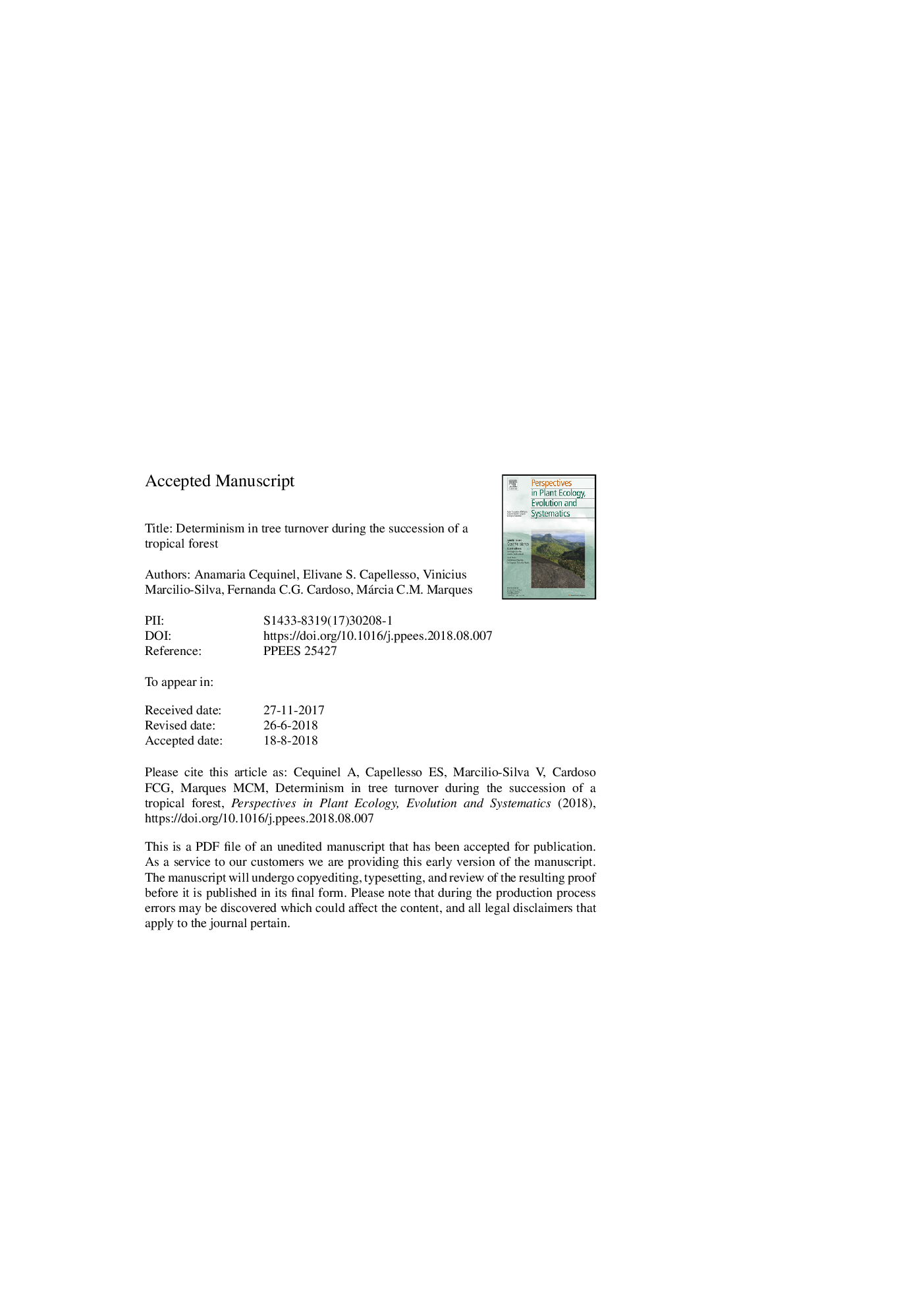| Article ID | Journal | Published Year | Pages | File Type |
|---|---|---|---|---|
| 10110412 | Perspectives in Plant Ecology, Evolution and Systematics | 2018 | 43 Pages |
Abstract
During forest succession, changes in tree species composition and individual turnover may be affected by deterministic and stochastic processes. In this study, we used both population and community approaches to assess the relative effects of deterministic and stochastic processes along the secondary succession of a tropical forest. We aimed to identify the mechanisms of community assemblage based on an analysis of abiotic and biotic drivers of demography. We assessed the demography (recruitment and survival rates) of trees occurring in an edaphic-successional gradient (forests aged 7-17, 20-30, 30-55, and >80 years; two soil types) of a regenerating forest in Southern Brazil. We first tested for stochasticity by building null models (randomized species composition and abundance) for each forest age interval. The composition and abundance of plants in all communities were different from those expected by the null models, which indicated determinism at the studied scale. We then used the structural equation models to assess the importance of environmental drivers (such as soil type and forest age) and species interactions (such as basal area, individual density and function, and phylogenetic diversity) to predict recruitment and survival. We found that both abiotic and biotic drivers affected the community assembly in successional gradients. Environmental drivers (soil stress and limitations related to forest structural complexity) indirectly affected recruitment and survival via biotic drivers (competitive ability, facilitation and niche complementarity). Therefore, the community assembly during succession is the result of a multi-factor process acting on recruitment and survival rates, which ultimately affect individual and species turnover.
Keywords
Related Topics
Life Sciences
Agricultural and Biological Sciences
Ecology, Evolution, Behavior and Systematics
Authors
Anamaria Cequinel, Elivane S. Capellesso, Vinicius Marcilio-Silva, Fernanda C.G. Cardoso, Márcia C.M. Marques,
